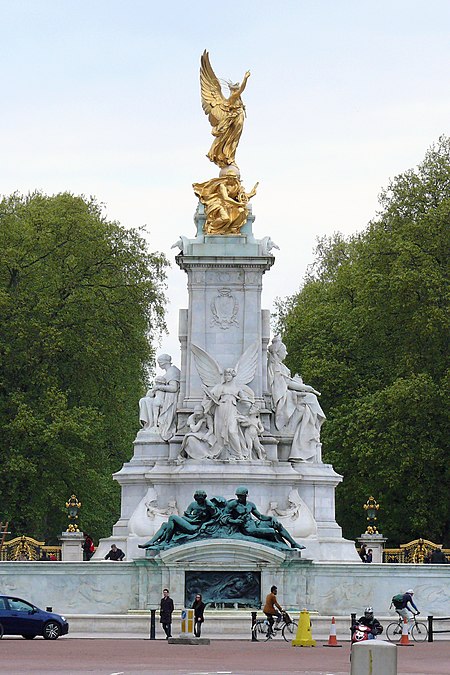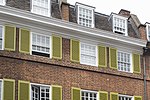Victoria Memorial, London

The Victoria Memorial is a monument to Queen Victoria, located at the end of The Mall in London, and designed and executed by the sculptor (Sir) Thomas Brock. Designed in 1901, it was unveiled on 16 May 1911, though it was not completed until 1924. It was the centrepiece of an ambitious urban planning scheme, which included the creation of the Queen’s Gardens to a design by Sir Aston Webb, and the refacing of Buckingham Palace (which stands behind the memorial) by the same architect. Like the earlier Albert Memorial in Kensington Gardens, commemorating Victoria's consort, the Victoria Memorial has an elaborate scheme of iconographic sculpture. The central pylon of the memorial is of Pentelic marble, and individual statues are in Lasa marble and gilt bronze. The memorial weighs 2,300 tonnes (about 2535 short tons) and is 104 ft wide. In 1970 it was listed at Grade I.
Excerpt from the Wikipedia article Victoria Memorial, London (License: CC BY-SA 3.0, Authors, Images).Victoria Memorial, London
Constitution Hill, London Victoria
Geographical coordinates (GPS) Address External links Nearby Places Show on map
Geographical coordinates (GPS)
| Latitude | Longitude |
|---|---|
| N 51.501847222222 ° | E -0.14065 ° |
Address
Victoria Memorial
Constitution Hill
SW1A 1BD London, Victoria
England, United Kingdom
Open on Google Maps










